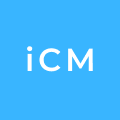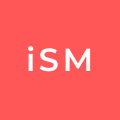Updated for 2025 | Informed by real client outcomes, multi-departmental input, and the tools transforming regulated manufacturing.
The Supply Chain No Longer Needs to Catch Up. It Needs to Stay Ahead
Not long ago, “strengthening the supply chain” often meant shoring up weak links, adding safety stock, or digitizing the occasional process. But underneath it all, the operating model remained reactive, responding to demand shifts, supplier inconsistencies, or QA bottlenecks.
That approach is no longer sufficient.
In 2025, chemical and pharmaceutical manufacturers aren’t just asking how to make their supply chains more efficient. They’re asking how to make them intelligent. They want systems that can sense pressure before it breaks something, workflows that course-correct without human delay, and supplier networks that don’t just report risk – but respond to it.
This evolution didn’t happen overnight. It’s been forged through lived pain points, boardroom recalibrations, and lessons learned the hard way. But the shift is clear: resilience now means readiness.
Strength Redefined: More Than Just Stability
Today, supply chain “strength” isn’t about holding firm. It’s about moving forward with precision – under increasing pressure.
The most progressive manufacturers we work with aren’t just digitizing – they’re rethinking how decisions get made, tracked, and corrected. They’re integrating root cause analysis into operational planning. They’re shifting from monthly KPIs to real-time control towers. They’re codifying tribal knowledge into cross-functional playbooks that scale.
Resilience today is designed, not delegated. And it shows how teams respond to failure: faster, together, and with fewer silos.
Why This Matters in Pharma and Chemical Manufacturing
One pharmaceutical client implemented predictive planning layered onto its ERP and MES platforms, enabling earlier detection of QA delays and production bottlenecks. Within nine months, unplanned shipment adjustments dropped by 37%, and batch release timelines improved by an average of 2.3 days – primarily by eliminating manual QA handoffs.
Another client, facing repeated delays from Tier-2 suppliers, used segmentation tools to uncover hidden geographic clustering risks. After rebalancing their sourcing model, they achieved a 14-day reduction in average order fulfillment cycles during high-volume months, particularly during seasonal demand spikes.
These aren’t isolated wins. They represent a broader shift from manual reaction to intelligent prevention.
In pharma, a two-day acceleration in batch release doesn’t just improve time-to-market, it reduces cold chain risk and protects patient timelines. In chemicals, a 14-day fulfillment gain during peak season means better SLAs, stronger customer confidence, and less reliance on costly air freight workarounds.
These shifts directly impact the two things every boardroom cares about: margin protection and reputational risk.
The Tools Once Promised Are Now Driving the Future
The digital promises of 2020; automation, integration, real-time visibility – are no longer in R&D. In 2025, they’re mission-critical enablers for high-performing supply chains.
And they’re not just available. They’re working.
-
AI-powered planning engines
Now help manufacturers reschedule production and procurement automatically, in response to real-time data from QA inspections, line performance, and transportation bottlenecks. Instead of waiting for a planner to rerun a forecast, the system adjusts proactively, helping avoid bottlenecks before they cascade.
-
End-to-end ERP-MES-QMS integration
Means quality events no longer exist in isolation. A failed batch, for example, can now trigger sourcing checks, inventory reallocation, and supplier alerts automatically. This removes the delays and manual gaps that once slowed down release cycles.
-
Vendor segmentation models
Don’t just evaluate supplier pricing or delivery speed. They use ESG metrics, geographic risk scores, and real-time performance data to identify which suppliers are adding long-term risk, and which are enabling agility. Leading procurement teams are using these models to shift from reactive buying to dynamic, value-first sourcing.
-
Generative AI assistants
(Ai Agents) have moved beyond marketing copy. In pharma and chemicals, they’re now summarizing supplier audit reports, generating draft SOPs from validated templates, and flagging potential risks during planning or procurement. Teams are using them as digital copilots, not to replace roles, but to eliminate hours of low-value work.
Together, these tools are doing what dashboards and manual trackers never could: They’re helping supply chain leaders replace lagging KPIs with live intelligence and build supply chains that sense, adapt, and respond in real time.
The Human Shift Is Just as Crucial
Technology alone won’t fix brittle supply chains. In fact, one of the biggest takeaways from our client work is that the organizations that saw the most transformation didn’t start with tech – they started with mindset.
They stopped treating late shipments or missed orders as isolated incidents and started treating them as symptoms of disconnected systems, outdated planning logic, or lost confidence in the process.
Procurement leaders were no longer willing to “just bulk-order” to stay safe. Production managers stopped relying solely on institutional workarounds. Teams stopped working in silos and started operating from a single, shared version of the truth.
That’s what strengthening a supply chain really looks like in 2025.
The strongest supply chains we’ve seen didn’t get there by deploying more software. They started with one hard truth: fragmented mindsets lead to fragmented outcomes.
Senior leadership had to sponsor integrated thinking – tying QA, procurement, operations, and planning to shared metrics.
They used value-stream mapping sessions to expose hidden handoffs. They implemented change champions inside planning and plant ops. They redefined success as early detection, not damage control.
When mindsets shift from “fix the issue” to “prevent the pattern,” transformation sticks.
Looking Ahead: What Strength Will Mean Tomorrow
If 2020 taught us that supply chains could break, the years since have taught us how they should bend. Strength is no longer about bracing for impact. It’s about building systems that stay agile, learn fast, and protect downstream processes – and the people they serve – from upstream risk.
And in pharma and chemicals, this agility doesn’t just win business. It protects lives.
The future belongs to supply chains that are not just visible, but predictive. Not just resilient, but responsive. Not just digital, but intelligent.
Ready to Build Yours?
If your teams are still reacting to issues instead of anticipating them, it’s time to rethink what your supply chain is capable of.
Let’s explore how XcelPros helps manufacturers in regulated industries build intelligent, integrated, and audit-ready operations that deliver when it counts most.
→ Talk to us about predictive supply chain modernization
Let’s map what readiness looks like for your business before the next disruption hits.



